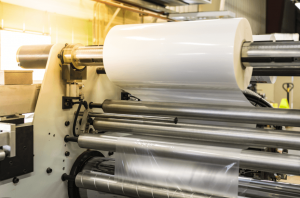If you have worries about the safety of your items, then laminating services may be the way to go. Our work involves us carefully adding a new protective layer. At the same time, we can improve the aesthetics. You will end up with something that is both functional and fashionable.
What is laminated printing?
 This is where you bond clear plastic films to printed pieces. It will keep the print safe from moisture and stains, increasing durability and strength. It also adds vibrancy and sheen to ink colours. With lamination, documents appear more professional and have a nicer finish.
This is where you bond clear plastic films to printed pieces. It will keep the print safe from moisture and stains, increasing durability and strength. It also adds vibrancy and sheen to ink colours. With lamination, documents appear more professional and have a nicer finish.
The clear film can come in a plethora of thicknesses. Some are flexible and thin, while others are rigid. You can consider this as well as the paper or card stock you are working with. It will give you the ability to decide what level of rigidity you want the final piece to have after lamination.
How do we measure film?
In terms of how you measure laminate films, you do so in mil thicknesses. One mil equals .001″. Thus, a film that measures 1.5mil would be .0015″ thick. Similarly, a film that measures 10mil would be .010″ thick. It is important to keep this in mind when you choose laminating services.
A key thing to remember here is the print will probably have laminate film on both sides. Because of this, a 1.5 mil laminate shall increase the total thickness of your piece by 3 mil. Likewise, a 10 mil laminate is going to increase the total thickness by 20 mil.
Essentially, the sturdier you wish your print piece to be, the thicker the laminate you would select. However, you may need to facilitate folding. If so, it is typically better to use a laminate film thickness of 3 mil or less. Like you would expect, folding becomes trickier as the thickness of your laminate increases.
What we want to do now is go over some common laminating film thicknesses and popular uses for the sizes.
1.5 mil thickness
This laminate is relatively thin. As such, it doesn’t add too much rigidity to your print. Yet, the 1.5 mil film is an economical one, especially when you’re applying to card stock or heavy paper. Examples include books, presentation folders, and flash card sets. Moreover, since this is the least expensive option, you can use it for print projects that have a temporary purpose.
Finally, the flexibility of this film is ideal for working on decals and labels. Come to us if you need first class laminating services.
3 mil thickness
Here we have the perfect middle ground film. It offers sufficient protection, but is still flexible and thin enough to let you fold. As a result, 3 mil is good for restaurant menus that need folding. Examples include the popular tri-fold and bi-fold menu. Something else a 3 mil laminate is good for is flip book or manual pages, maps, and wall posters.
5 mil thickness
The thickness here provides moderate sturdiness to your print materials. It holds up to regular usage too. In some instances, you can score and fold the laminate. However, it could yield a “spring open” effect on specific pieces.
Here you have a film that is a wonderful choice for flat pieces that will face frequent handling. This includes diagrams and charts, event passes, bookmarks, and instruction materials. The thickness means they will last longer, even with soiling from frequently passing hands.
We fully understand laminating services
At Foiling Services, we understand the lamination process better than anyone else. Our knowledge is so vast that we know there are instances where it would not be suitable. For example, adding the film could risk damaging delicate documents. In these situations, we will instead offer advice on alternative solutions for you to use.
So, if there is anything we can do for you with our laminating services, please let us know. Our team love having the chance to find the right solution for you.
